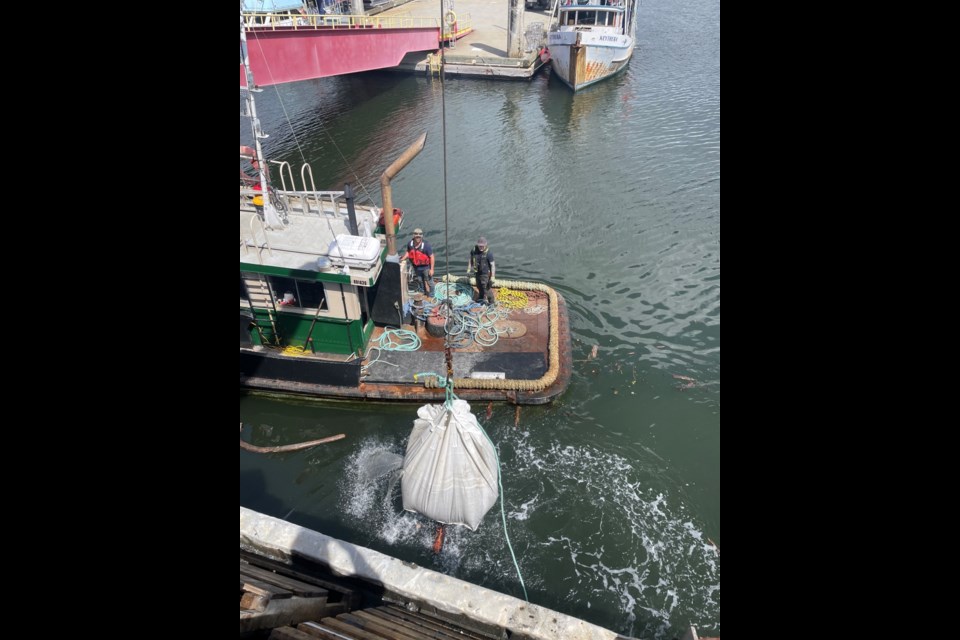For more than two days, a team of 15 volunteers resurfaced tonnes of garbage from the bottom of Gibsons Harbour. Divers from Freedom Diving Systems helped the Nicholas Sonntag Marine Education Centre haul 80 tires, 150 glass bottles, old appliances, large batteries, metal and marine plastic out of the water in Gibsons Harbour, filling two bins from Coast Bin Rentals.
The efforts targeted the Gibsons Landing Harbour Authority and Shoal Channel to Armours Beach.
Even though some of the items are small, all of them can break down into tiny pieces and add up to a bigger problem — around 1.5 tonnes of a problem.
“Marine debris and marine plastics are causing bigger and bigger issues for the environment. They take up valuable sea floor that could work as habitat, and create microplastics, which affects many different species’ diets and feeding,” Jenny Wright, the aquarium curator, said. Removing the tires — many that fell from old docks — before they have a chance to break down is a preventative measure. Divers also found old glass bottles that look as though they have been there for decades.
Most of the items are likely accidentally dropped into the water. Wright said she wants people to know, “The amount of effort that it takes for us to then clean up the things that end up in the ocean is probably tenfold for what it took them to drop overboard, because it involves divers in the water, then we use cranes to crane them out.” Then volunteers sort and pack the bins before they’re hauled to recycling at the landfill.
Funding for the project came from the Pacific Salmon Foundation, the Gibsons Rotary Club, the Town of Gibsons’ Healthy Harbour Project, and in-kind donations from the Gibsons Landing Harbour Authority, Coastal Bin Rentals, Gibsons Marine Transport Ltd., RCMSR Station 14, and the Sunshine Coast Regional District.
After being removed from the water, as many of the items as possible will be recycled, much of it at the Sechelt landfill’s new ocean plastics recycling depot. And there will be more habitat space on the ocean floor.



